Upside-down gardening: March in Central Otago
What’s happening in the garden in March? As February ends, the days are getting shorter and, although it’s still hot in the afternoon, the mornings are cooler, and the trees will be just beginning to change colour as April approaches.
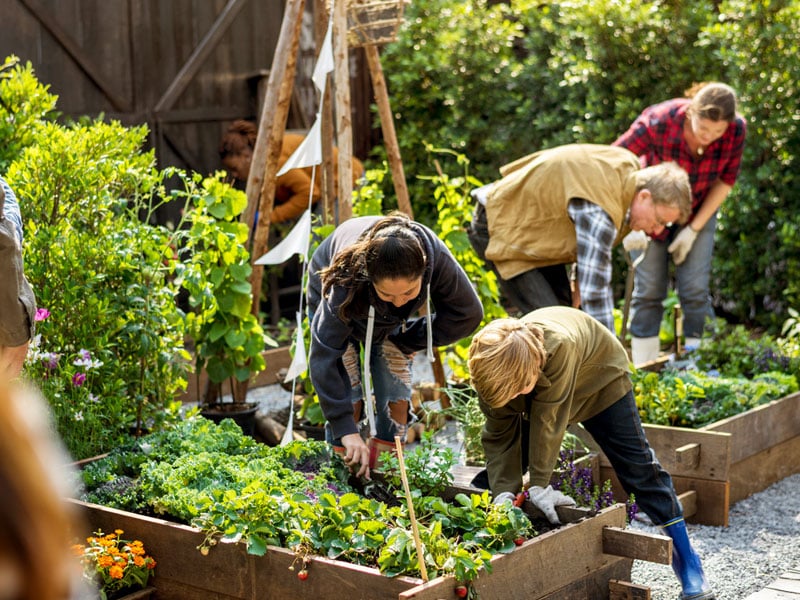
The past revisited
When I introduced myself in my first blog, I said I would tell you a bit more about why I came to New Zealand. Now it’s time to keep that promise. I came here to be with a man I met when we were just teenagers, back in the North-west of England. We were sweethearts for a while, but we went our separate ways, married other people and lost touch. Roger emigrated to New Zealand and, after a long marriage, became divorced. My marriage also ended. Years later, Roger found me on Facebook and we became long-distance friends. He went to Britain to visit family, we met up and he invited me to New Zealand for a holiday. After the holiday, I put my house up for sale, informed my employers I would soon be leaving and came back to New Zealand for good.
On 19 February, we got married in a beautiful garden at Monte Christo Raspberries and Café. Who wouldn’t marry a man who is willing to carry heavy bags of mulch and can even custom-make garden tools?

Abundant harvests
Potatoes and tomatoes
A workplace tradition in this area is to have a competition for who can grow the most potatoes from a spud in a bucket. As I had already started some potatoes in special potato bags, I grew my competition spud in one of those jute shopping bags that the supermarkets gave out when they stopped having plastic carrier bags. Growing them in a bag or other container means it’s easy to harvest them. I use coir blocks as a growing medium for all my container plants. This is so that I don’t have to worry about Legionnaire’s disease from potting compost, and I know that my purchase is not contributing to the destruction of peat bogs. Coir does not have any fertiliser in it, so I add some when I rehydrate the dried, compacted blocks. This also means I can adjust the fertiliser to suit the plant, so when I grew my potatoes, I used a fertiliser specifically designed for potatoes. My harvest wouldn’t win a prize, but I was pleased to be able to pop out into the garden and get some potatoes for dinner guests. I washed them, softened them in the microwave and then roasted them in the oven with plenty of olive oil, whole cloves of garlic and some sage leaves.
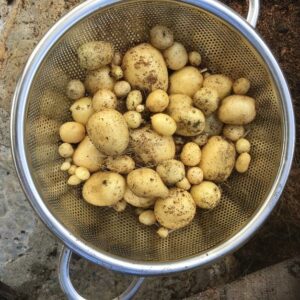
The first frost could come around 20 March, so around that time, the tomato plants will have to be stripped, including the green tomatoes, and the plants lifted and thrown away. Some of the green tomatoes will ripen in a bowl in the house. Those that are slow to ripen will become green tomato chutney with lots of chilli, turmeric and ginger. Potatoes and tomatoes are from the same family (nightshade) and It is safest not to compost the plants, as they are both vulnerable to diseases carried on from previous years. I practise crop rotation, so next year’s tomatoes won’t be in the same part of the vegetable garden as this year’s. When I emptied the potatoes out of the bag, I put the used coir on a part of the ornamental garden well away from the vegetable patch, and I was careful to remove even the tiniest potato tubers.

Vegetable seeds to sow in March
I’ll be planting beetroot and lettuce seeds. March is also a good time to plant cruciferous vegetables. I’m not going to bother with broccoli, brussels sprouts and cabbage, but kale has self-seeded and grows very easily, so I’m happy to continue picking off a few leaves when I need it. I’ll also experiment with pak choi.
Healthy herbs
I have a big pot of Vietnamese mint, or laksa leaf, on the balcony. It is not from the mint family at all but is related to persicaria. It will have to be brought indoors before 20 March, and as extra insurance, I like to take cuttings. When I take a few stems for salad, stir-fry or light Asian-type soup, I, strip off the lower leaves and use them, then put the stems in water on the kitchen windowsill. They make roots within a week and then they can be potted up and kept indoors. It is a soft herb, so should be added to cooking right at the end, like you would with parsley. It has a wonderful, exotic flavour and is better than 5-spice in a summer stir-fry.

Easy plants for a hot, dry environment
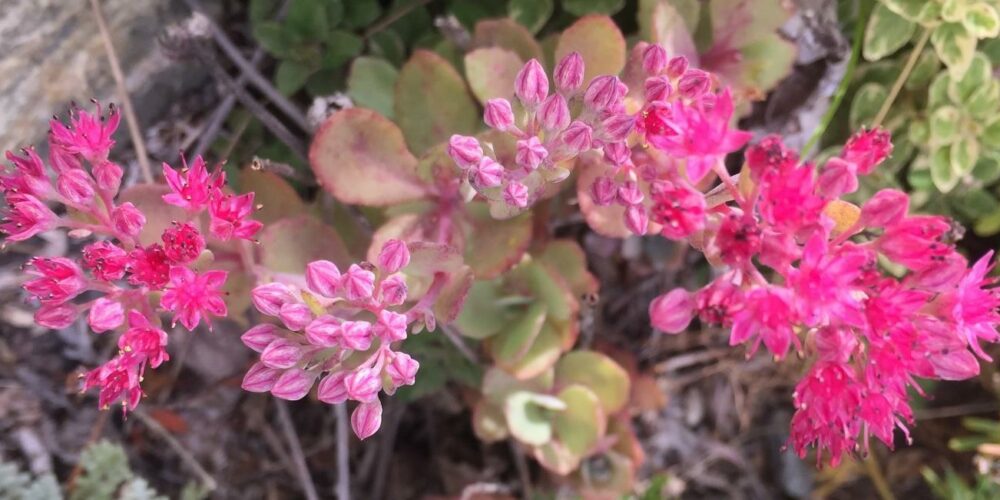
Sedums and houseleeks are flowering now. They are easy to propagate and very tolerant of drought. They make a great edging for a dry, rocky border, even in pretty cottage-garden-type areas. They also look good in pots
Alyssum also self-seeds inside and out of the garden. It does not crowd out other plants, is easy to pull out and makes a nice filler/edging plant in dry, difficult spots. It is usually white, but you can get it tinged with pink or purple.
Gaillardia, or carpet flowers, are happy to self-seed and can be found as garden escapees by the walking/cycling tracks.
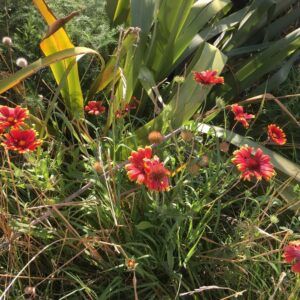
Spring plants in autumn
Some spring plants here have a little burst of growth in autumn.
Some of the tiny cyclamen in my garden have a second flowering, and my blue grape hyacinth bulbs (muscari) produce a second set of leaves before dying down again in winter.
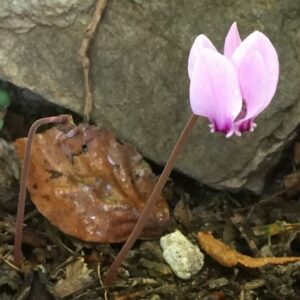
Plants that need to be controlled
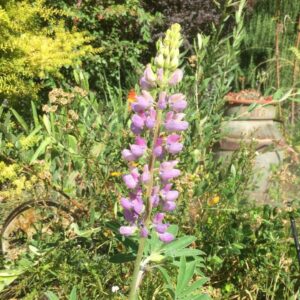

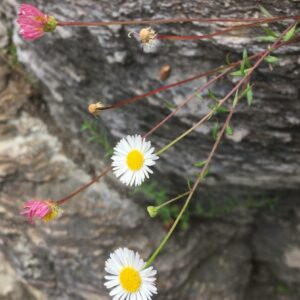
Lovely lupins
Fragrant honeysuckle
Mexican daisy
You may have seen photos of New Zealand landscapes with swathes of lupins in the foreground. Lupins are lovely, and because they are leguminous, they fix nitrogen, so they’re great chopped up for mulch. However, they’re far too big and sprawly for a town garden and they self-seed very easily. Pull them out, or if their long tap root won’t budge, cut them and dab some weedkiller on the cut stems. Along with their close cousins, tree lupins, they are regarded by the Department of Conservation as noxious weeds.
Once honeysuckle has finished flowering, and before the flowers become berries, you should prune it right back to a framework to keep it in shape. It grows extremely vigorously, and not only does drop berries, which quickly grow into strong seedlings, it also makes roots at the end of any of its long stems that touch the ground. Pruning it keeps it healthy and ensures a nice crop of flowers in the summer.
Although very pretty, this plant, also known as fleabane, is just as invasive as clover and seeds itself everywhere. I quite like it growing out of cracks in the rock face behind the house, but it is essential to cut it back before the flowers become seeds. It has very deep roots and I pull it out of flower beds whenever I see it, otherwise the only plants in my garden would be Mexican daisies.
Bright berries
The approaching end of summer is heralded by beautiful berries in the garden and on the walking tracks.
Asparagus pops up everywhere in my garden, probably from its bright red berries. The tender new shoots are delicious in the spring and early summer, so I have been a little lax about pulling it out in the past. Now, I try to keep it to the back of the border, so that its ferny fronds can make an attractive background to the gaura, chrysanthemums and lavender in front.
Euonymus europaeus, or spindle, grows wild on the river track, so would make a very easy garden plant. It has graceful, arched branches. The dainty, off-white flowers become shocking pink fruits, which split to reveal bright orange seeds: an astonishing combination of colours reminiscent of the psychedelic ‘60s.

Hypericums also grow wild on the river track and they produce handsome, but poisonous black berries. Different varieties have been bred to produce a range of different berry colours, which look beautiful in flower arrangements.
Central Otago is famous for its paeonies. Our cold, dry winters give them a proper hibernation period. Herbaceous paeonies produce fantastic red and blue-black berries at this time of year. I have managed to raise a few seedlings from berries I have collected. They take a long time to reach flowering size, so I’m still waiting.
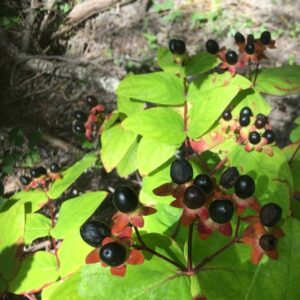
About the author

My name’s Pamela and a few years ago, at the age of 55, I made the decision to start a new adventure. I left the north-west of England, where I had lived all my life, and moved to New Zealand. I’ll tell you more about why I did that in a future article. I’m excited to be a guest blogger on Gardenize, and I’m looking forward to writing about my garden in beautiful, sunny Alexandra in Central Otago.
My garden here is about as different as it could get from the damp, shady garden I left behind. Central Otago is the hottest, driest, coldest area in New Zealand, as we have hot summers and cold winters, along with a semi-arid climate. The area is famous for its orchards and vineyards. It has many quaint little rural townships with pretty cottage gardens featuring the peonies, bearded irises, hollyhocks, lilies, roses and lavender that grow so well here.
The landscape is spectacular, with dry, rocky mountains and impossibly blue lakes and rivers. The dry mountains look barren, but they’re actually covered in tough little thyme plants: a great clue to what might grow well in the garden.
GARDENIZE GARDEN APP
Your garden friend with green fingers and photographic memory.
Gardenize is an app for gardening and cultivation that helps you to overview, understand and develop your garden and your crops. Organizing your garden makes it easier to succeed and your Gardenize app structures all information and make it searchable. You’ll get tips and inspiration from other Gardenizers around the world. All Gardenize basic features are free to use. You can download the app from the App Store or Google Play, or create an account directly in the web app in your browser. Get to know Gardenize better here.
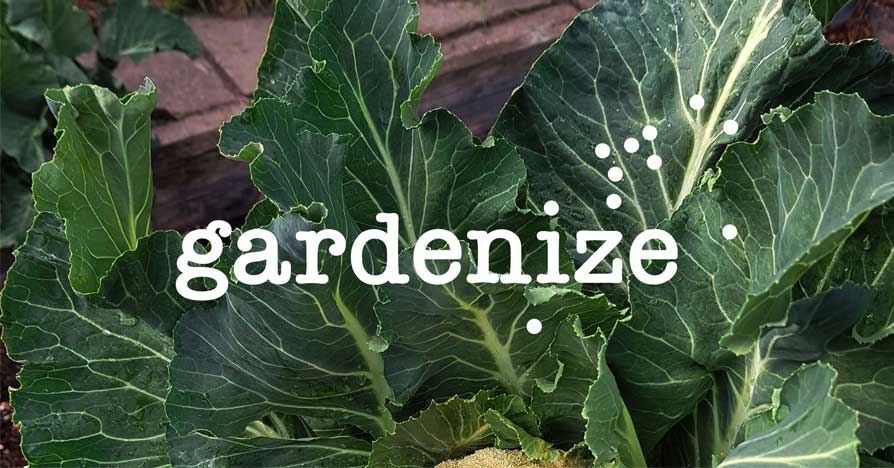
More from Gardenize
Images published on the Gardenize website belong to Gardenize AB and may not be used without permission.


